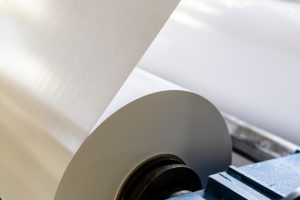Do you know Six Benefits of Utilising Release Liners? The release liner also referred to as the “carrier” or “backing,” may be the unsung hero in the world of adhesives. The pressure-sensitive adhesive is kept within this product, which is often a coated paper or film until it is required. Consider the shiny paper that a label or sticker is printed.
A release liner can have paper, poly-coated paper, film, or even metalized film as its base material. Many companies cover their own silicone sheets or films to produce pressure-sensitive products. Contrarily, commercial producers create coatings expressly for the requirements of their customers, which they subsequently market on the “open” market.
Read More: 10 Best Viral Video Content Curation Websites
Contents
Benefits of Utilising Release Liners

1. Environmental–friendly
Sadly, more than two-thirds of release liners continue to be dumped in landfills. This issue still exists because release liners are not biodegradable. Because the composite is made of silicones and paper, they are not easily recyclable. Used pressure-sensitive labels contain high-quality, recyclable components, though.
Globally, laws that support the reusing of release liners are still becoming more prevalent. One such project, the ambitious Circular Economy Package from the European Commission, sets specific targets for trash reduction. A Life Cycle Assessment can show the product’s and the liners’ effects on the environment throughout the supply chain (LCA).
2. Technologically advanced
Silicone technology has changed to match client priorities, which are faster line speeds, lower costs, and higher quality. The Pressure-Sensitive Labels Market – The market for pressure-sensitive labels has grown significantly as a result of the food and beverage industry’s quick expansion.
Because they enable the incorporation of product information, regulatory information, and identification data like barcodes on packaged foods, all of which are required for the increasingly popular practice of long-distance shipping, pressure-sensitive labels are essential to the food and beverage industry.
3. Hard to break or tear out
The purpose of the release liner is different in the pressure-sensitive labeling industry than it is in many other industries. The release liner needs to be a reliable support for the label laminate in order to ensure appropriate label printing, conversion, and application. The liner must additionally offer a firm surface for die-cutting the
complicated forms used in the prime label industry that prevent the die from penetrating the silicone layer, which would let the adhesive stick to the liner and reduce the effectiveness of the release.
4. Extensive output
When compared to products constructed with a 2.5 mm Kraft liner, label yield is boosted by 30%, enabling the use of longer rolls and reducing the need for roll changes. With fewer web breaks, the heavy-duty polypropylene liner enables faster dispensing and conversion.
The lightweight, thin construction of the liner also results in lower out-of-pocket expenses for packaging and shipping. More labels may be fit onto a reel, increasing productivity while lowering costs by reducing the number of raw materials and transit time needed.
5. Contributes to the long-term economic health
A solution that won’t harm the environment has been found for the issue of where to dispose of all the spent siliconized liners. For instance, the RafCycle program, which collects and recycles ProLiner PP30 garbage for use in the future production of new products and other PP-based materials, makes it feasible for UPM ProFi, a wood-plastic composite that is frequently used for outdoor decking.
Brand owners may support ecologically responsible packaging while also saving money on rubbish removal and disposal by signing up with the RafCycle program. The ProLiner PP30 products and the RafCycle program from UPM Raflatac are developments that will significantly affect the whole industry.
6. Consistently reliable
Any effective release liner must contain silicone, and Evonik Goldschmidt Corporation in Hopewell, Virginia, USA, is the market leader in siliconizing substrates. According to Eduardo Gonzalez, market manager for the Americas at Evonik’s Release Coatings division, the company’s easy-release formulation of radiation-curable silicones is by far its best-selling product.
This special composition is made up of quick-release silicone and the anchoring element. According to him, the received release is trustworthy and consistent over time.
Evonik offers two silicone release technologies that are UV-curable. These UV-curing silicones can be used to make release coatings since they cure without the use of heat (this process is known as “cold curing”). There are several different release values available, and the most recent TEGO RC silicone generation
Gonzalez claims that “radiation-curable silicones have several advantages, such as the ability to siliconize printed surfaces without post-curing, and an infinite variety of substrates (low-cost papers, all types of films, even metalized).
Conclusion
For paper-based release liners, polydimethylsiloxane is one of the most often used and useful polymers because it offers a little sticky yet releasable surface (PDMS or silicone). The substrate paper is coated with surface-sized coats of polydimethylsiloxane (PDMS), occasionally in addition to a thin barrier coating layer.
If used, barrier coatings help prevent the silicone from leaking through the form. Clay and polyvinyl alcohol are two typical materials used as barrier coatings.



